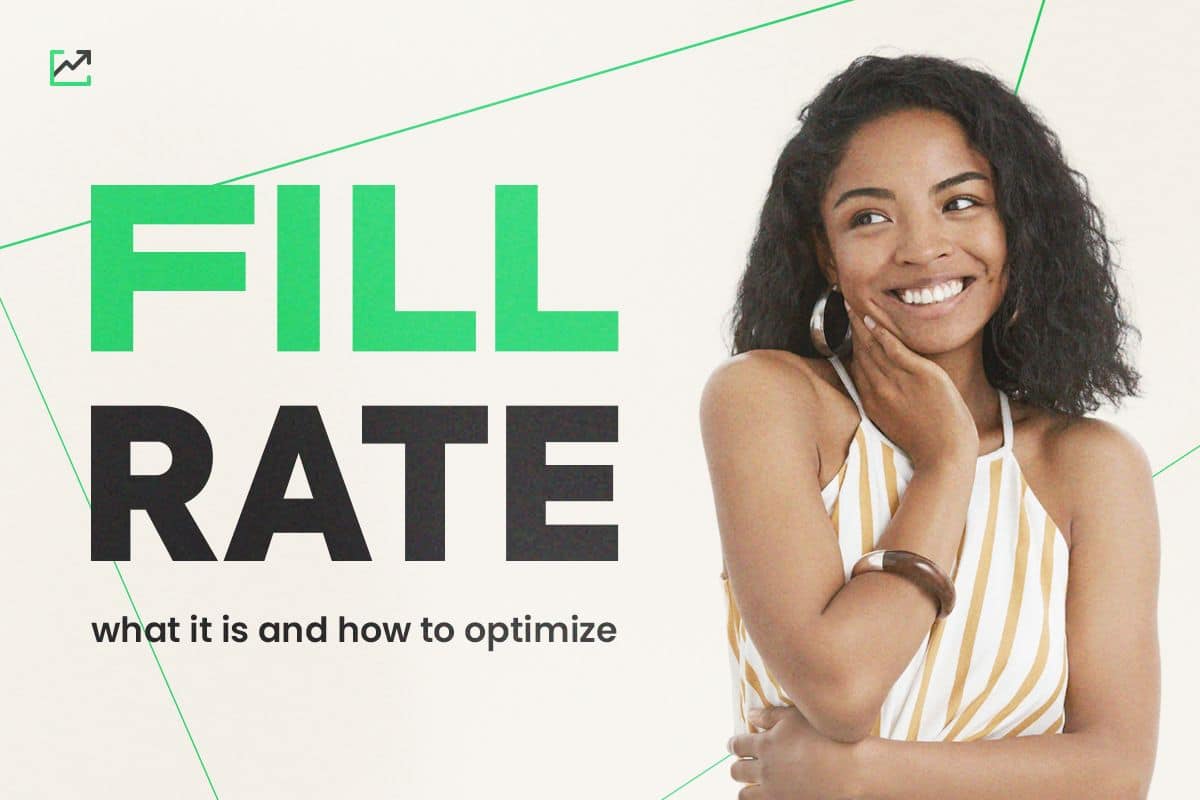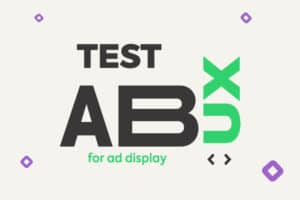Researching more about Fill Rate and page views or impressions at the best possible price is essential for the success of your website. With so much competition, publishers from around the world are constantly seeking ways to maximize these rates. After all, nowadays, there are at least two billion websites on the Internet, and the majority of them rely on ad revenue to monetize their content.
If you’re an advertising partner of Grumft, welcome to our blog. But if you’re not yet, we hope this content motivates you to explore our exclusive programmatic solutions for publishers and advertisers. In this article, we will help you understand what Fill Rate is, grasp how the network of advertisers operates, and how you can maximize your revenue through this rate.
Index
What is Fill Rate?
The Fill Rate represents the proportion of successfully delivered ads to the total number of ad requests made by the ad server. In other words, it’s the success rate of all the ad calls made by your ad server. To calculate the ad fill rate for your website, use the following formula:
% Ad Fill Rate: (Delivered Ads / Total Ad Requests) x 100
Example:
If a website has 200,000 visitors in a month, let’s assume this results in 200,000 ad requests. However, not all of them will result in displaying an ad. So, if an ad is successfully displayed to 170,000 of these 200,000 visitors, it means the site has an 85% fill rate.
Considering that the Fill Rate relates to how many ad calls were actually filled with an ad, maximizing this number should be a constant concern for a successful publisher. Therefore, if you want your site’s fill rate to approach 100%, keep reading to learn how to optimize it.
Achieving 100% Fill Rate
Many factors influence ad fill rates, which are constantly changing. Often, your site can achieve an impressive fill rate in one month, but in the next, it might experience a significant drop due to internal and external factors.
Therefore, as you can imagine, reaching a 100% fill rate is nearly impossible. However, some ad networks allow you to manually set your fill rates, but more ads doesn’t always mean more revenue.
Your site’s revenue doesn’t depend solely on the quantity of ads, as different ads have varying CPMs (Cost Per Mille). It’s not worth sacrificing CPM to achieve a 100% fill rate. In other words, it’s better to set lower target fill rates but ensure higher-paying ads. The most common way to balance fill rate and CPM is to test higher fill rates until your CPM starts to drop.
Example:
If your site’s average CPM is $1.90, with a 70% fill rate, and it drops to $1.10 with an 80% fill rate, it’s better to stick with the former.
Aside from this example, there are two more reasons to keep lower fill rates with higher CPMs for certain publishers:
Server Fees: Publishers paying server fees per impression will benefit more from fewer ads with higher CPMs. Ad Quality: The higher the fill rates, the greater the chances of low-quality ads being displayed on your site. Low-quality ads can lead to issues like site slowdown and loading problems, negatively affecting user experience.
Deciding whether higher or lower Fill Rates are more suitable for your site is solely up to you. This isn’t an exact science, as each site is unique, and what works for one publisher might not be the best choice for another. Therefore, you need to adjust your goals based on your site’s content and business needs.
Reasons for a Fill Rate Lower Than 100%
Whether to have a 100% fill rate or not needs to be a publisher’s decision. And as you already know, a 100% fill rate isn’t always the best option. However, in cases where higher fill rates lead to higher revenue, it’s better to be prepared to get the most ads possible. Therefore, you need to understand the main reasons why your site isn’t achieving a 100% Fill Rate.
1. Technical Errors
The complexity of online advertising technology is no secret. From ad exchanges and fraud detection to ad verification, a multitude of processes happen in real time, which can result in technical errors.
Solving these errors can be a challenge for publishers without a team of developers specialized in ad operations. If you’re facing this type of problem, expanding your team might be necessary to ensure higher fill rates.
2. High Competition or Lack of Demand
A common issue for publishers trying to increase their fill rates is a lack of demand. Often, publishers in a particular niche struggle to fill their ad inventory.
It could be that the ad network you’re using has low supply or advertisers are not interested in advertising on your site. In such cases, there might not be much you can do, so you can focus on maximizing CPM.
Another common scenario is when a publisher operates in a highly competitive niche. In this case, you could try implementing header bidding. This technique can help you maximize CPM through real-time bidding and might be your best alternative.
3. Latency Issues
Latency is also a frequent reason for low fill rates. The response time between the client and the server can delay ad rendering, causing users to either leave the site or scroll away before the ad loads. If your site has a history of slow loading, DSPs (Demand-Side Platforms) may choose to display ads on other higher-performing sites.
If your site has latency problems, you might consider getting a Content Delivery Network (CDN) or changing your hosting provider.
4. Device Compatibility
When aiming to increase your fill rate, take into consideration visitors using mobile devices. Some ads are not compatible with all browsers, devices, and operating systems, leading to a loss of a significant portion of your audience.
Therefore, regardless of format or size, implementing mobile-friendly ad formats maximizes fill rates. Make sure to choose formats that have a high supply.
5. Ad Blockers
Ad blockers can significantly impact your site’s fill rate and your revenue, as some ad-blocking software doesn’t stop ad requests; it merely prevents ads from being displayed.
The best way to bypass ad blockers, commonly used by video advertisers, is by server-side ad insertion. With this method, you can insert your ads into a single video stream, hiding them from ad blockers.
6. Discrepancy in Reporting
As you might have noticed, there’s often a discrepancy in reports between ad servers and demand partners. This happens because they count impressions differently, and you might expect a difference in fill rate between the two. There’s no solution to this problem, but you need to consider the fill rate.
Recommendations
To solve many of these issues, many publishers use more than one ad network and advertising platforms to monetize their sites. Partnering with various ad providers will increase your site’s fill rate, as it increases the chances of ad calls returning an ad.
Determining an average fill rate nowadays is challenging, as factors like the number of ad networks or ad platforms you use, the quality of these networks, niche competitiveness, among other factors, are important elements to consider when measuring your fill rates against competitors.
How to Optimize Fill Rate?
Even though achieving a 100% ad fill rate might be impossible, it’s important to optimize your site. If your goal is to have the best possible fill rate in your industry while maintaining a good CPM, there’s work to be done:
- Refine Targeting: Advanced targeting options like contextual and behavioral targeting have a significant impact on displaying high-quality ads. Showing relevant ads enhances user experience and can significantly improve your revenue.
- Partner with Quality Ad Networks: The quality of advertising networks and ad supply will have a significant impact on your fill rates. Partnering with only a few networks or a small number of advertisers might not be a good idea if you have a high number of visitors throughout the month, as they might not meet your demand volume, resulting in low fill rates.
- Optimize Site Speed: Having a fast and responsive site is essential for user experience and ad performance. Responsive sites load ads quickly, increasing the chances of users staying on the site or not scrolling past the ads.
- Optimize for Various Ad Formats: To ensure higher fill rates, include various ad sizes to fit a wide range of devices.
Final Thoughts
In summary, the Fill Rate is an important metric that you shouldn’t neglect. Consider it when evaluating your campaign performance. After all, if your Click-Through Rate (CTR) is good, but your ad fill rate isn’t, you’re likely losing money. Above all, rely on Grumft to support you on this journey.





